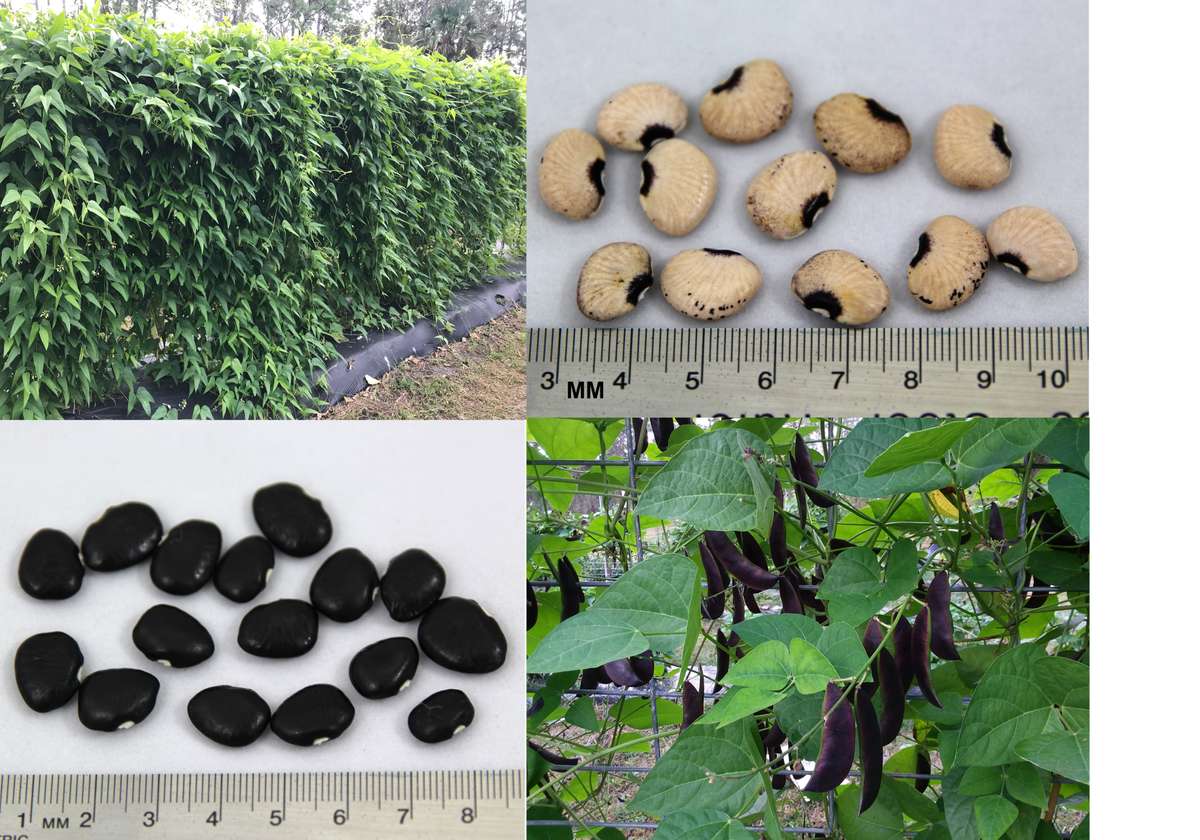Without equal, Phaseolus lunatus reigned supreme as my favorite childhood “vegetable.” I celebrated every time my grandmother graced her table with this popular staple of the southern United States—always accompanied by golden cornbread, of course. Known as “butter bean” in the US South, my grandmother certainly knew the secrets to eliciting the creamy texture responsible for this common name. Undoubtedly, between bites of beans and bread, I had not pondered the global significance of this particular legume.
Originating in Central and South America, post-Columbian Spaniards introduced P. lunatus to Asia via the Philippines, and its voyage to Africa was a direct result of the transatlantic slave trade. As much of the export of P. lunatus originated from ports in Peru’s capital, it adopted the common name, “lima bean.”
A dietary dynamo, lima beans are low in fat and high in protein and dietary fiber. Myriad cultures have adopted its use, and have similarly created myriad methods to prepare it. Young pods are boiled or fried as a vegetable delicacy, mature seeds may be harvested while still fresh or allowed to dry in-pod, and leaves and stems are often used as livestock fodder. Dried seeds can be boiled and reconstituted for typical bean soups or stews or pounded into flour for various porridge and bread applications. As with most beans, adequate cooking is necessary to eliminate antinutrients.
A nitrogen-fixing legume, lima bean belongs to the Fabaceae family, and thus shares many similar characteristics with its cousins: trifoliate leaves, papilionaceous (butterfly-shaped) flowers, pod-borne seeds, and nodulating roots. Numerous cultivars of P. lunatus exist, and are often categorized as vining or bush types. The ECHO Global Seed Bank has historically offered four cultivars, and has recently added two new strains: ‘Haba’ and ‘Humidity Resistant.’

Figure 7. Clockwise, from top left: P. lunatus ‘Haba’ vines demonstrating vigorous growth; ‘Haba’ cultivar seeds, white with purple mottling; ‘Humidity Resistant’ seeds; and ‘Humidity Resistant’ seed pods on vine. Source: Seed photos, Cody Kiefer; others, Holly Sobetski
Former ECHO staff member, and long-time ECHO friend, Brad Ward, noted the advantages of a locally available P. lunatus strain while working in the Dominican Republic. Drawn to its productivity in poor soils and harsh climates, Brad provided the ECHO Global Seed Bank with a supply of seeds, where it was dubbed ‘Haba.’ Plants are vining-type, day-neutral, and bear white seeds with purple mottling (Figure 7). Leaves of this cultivar are trifoliate and distinctly pointed; seed pods are green. ‘Haba’ is robust, high-yielding, and requires minimal maintenance. Brad also shared that cooks in the Dominican Republic found this strain flavorful.
Dr. John Bishop similarly donated seed from a lima specimen noted for its tolerance of hot, humid conditions. For most cultivars of P. lunatus, heat stress significantly decreases yield; however, the ‘Humidity Resistant’ strain provided by Dr. Bishop has shown an ability to withstand such conditions and maintain high yields. This is another vining-type cultivar. Pods are dark purple and bear black seeds (Figure 7).
Common pests and diseases of lima bean include web blight (Rhizoctonia solani), fusarium root rot (Fusarium solani), downy mildew (Phytophthora phaseoli), root-knot nematodes, and aphids. To reduce pest and disease pressure, apply IPM techniques mentioned earlier in this issue of EDN.
We encourage active development workers to take advantage of our 10 free trial seed packets offer (limited to two packets per cultivar/variety) and explore the potential of these two cultivars to bolster your work. Trial seeds can be used to evaluate new species that may help to diversify food crop options, improve soil fertility, provide useful farm products and generate income for small scale farmers. Give these selections a try, and let us know how they perform for you!
For more information on cultivation of P. lunatus, refer to our Plant Information Sheets on ECHOcommunity.org.
References
Baudoin, J.P. 2006. Phaseolus lunatus L. Record from PROTA4U. Brink, M. & Belay, G. (Editors). PROTA, Wageningen, Netherlands. http://www.prota4u.org/search.asp. Accessed 5 September 2019.
Bishop, J. 2019. Personal communication
Sobetski, H. 2019. Personal communication.
Ward, B. 2019. Personal communication.
Cite as:
Kiefer, C. 2019. New Lima Bean Cultivars Available. ECHO Development Notes no. 145